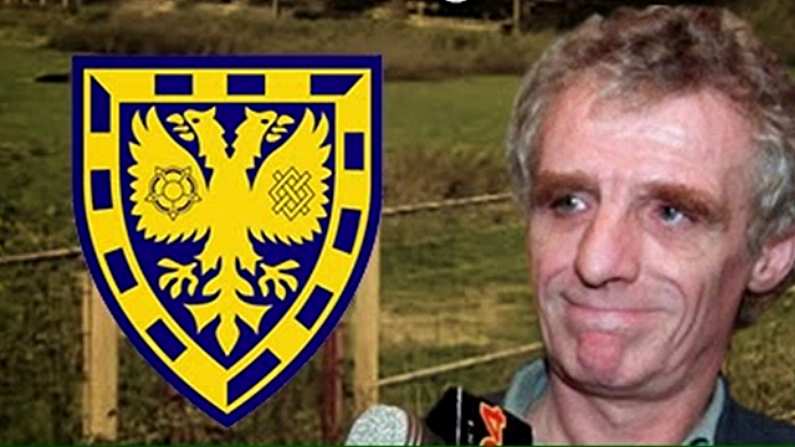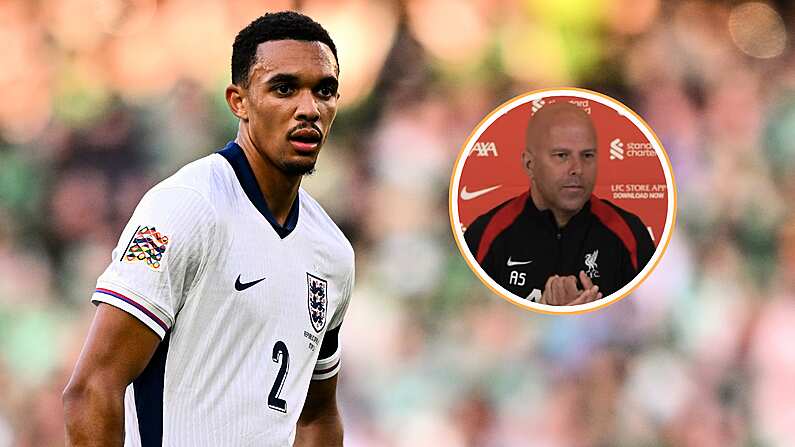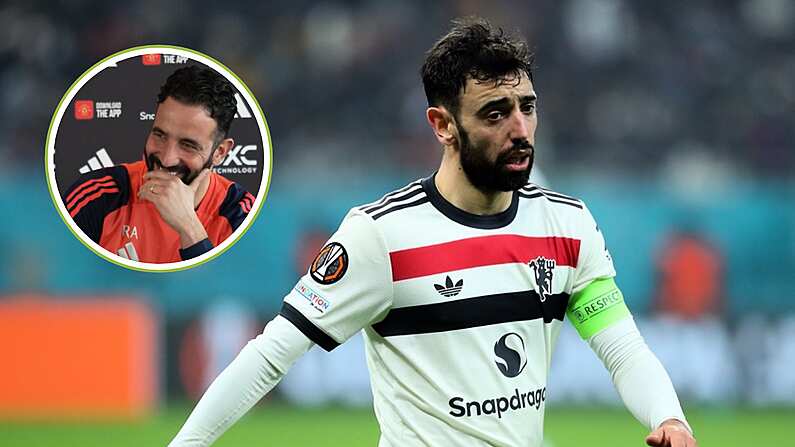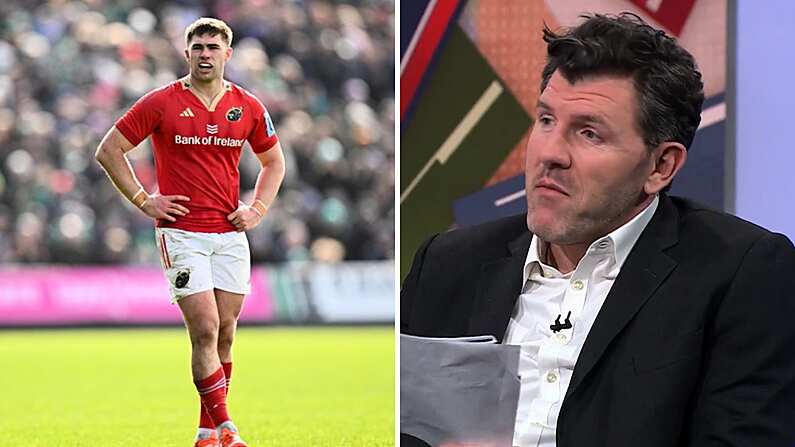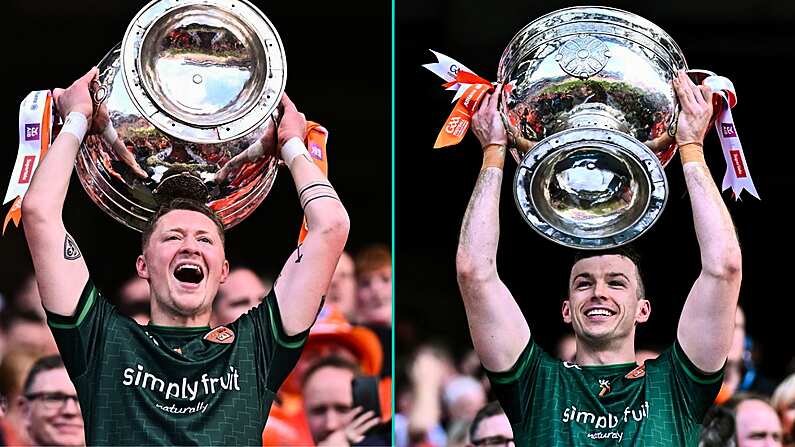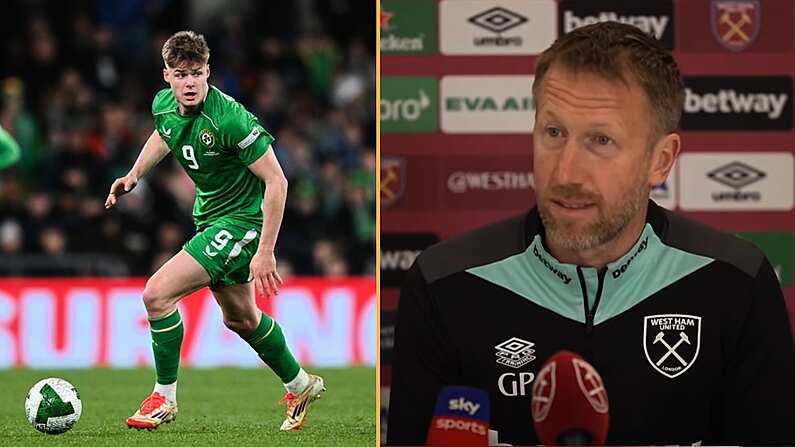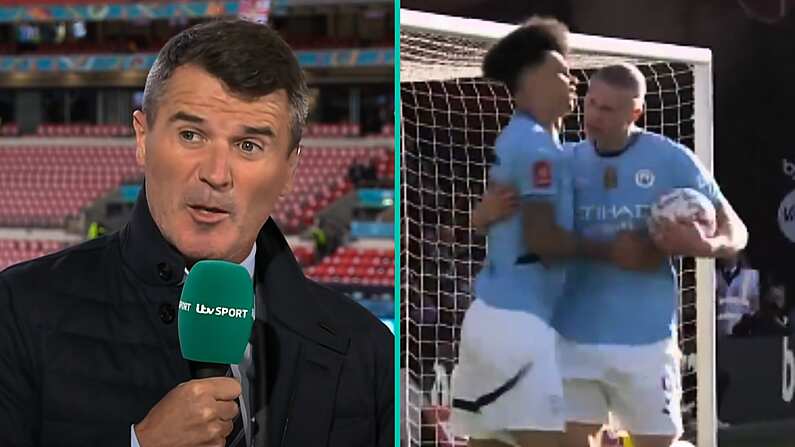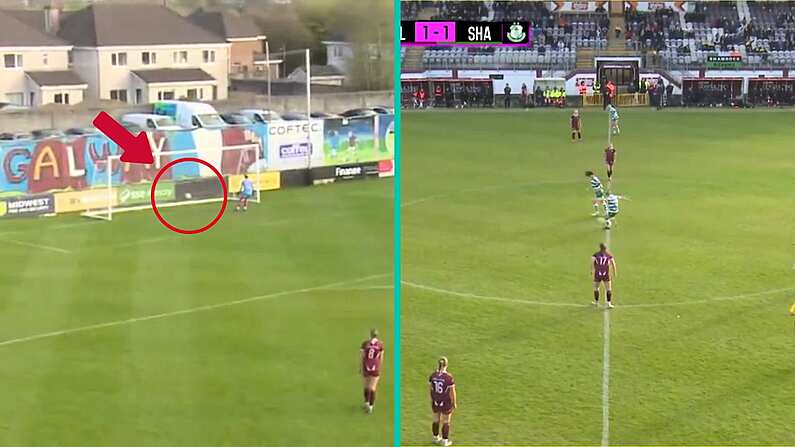Here are eleven articles from 2014 for you re-visit over Christmas. From the tale of how Wimbledon almost moved to Dublin to a detailed look-back at the lost years of Kerry football in the late 80s and early 90s, here are several articles for your perusal.
The complete story of the time Wimbledon nearly came to Dublin
'Dublin is a fantastically sexy option. What else can I say?'
With the help of leading advocate of the move Eamon Dunphy, then FAI President Bernard O'Byrne, head of National League United Niall Fitzmaurice, and leading protester and the co-founder of AFC Wimbledon, Marc Jones, we examine the full story of how the Dublin Dons very nearly came to be.
Some time in 1994, Joe Kinnear picked up the phone and called Eamon Dunphy. Wimbledon had just finished in the absurdly high spot of sixth in the Premier League. This was not a position reserved for teams with no ground and a tiny fanbase.
Dunphy and Kinnear were old friends from their days playing together for the Republic of Ireland side during the late 60s and early 70s, a period when Ireland barely won a match.
Despite possessing an accent that made him sound like a minor Only Fools and Horses character, Kinnear was in fact born in Dublin. This was something which was widely known and referred to in those days, much more so than it is now.
Kinnear told Dunphy that Wimbledon’s tennis loving Lebanese chairman Sam Hammam, invariably described as ‘colourful’ in newspaper reports, was looking to sell the club.
Then came a highly unorthodox suggestion. Would Dunphy be interested in helping the club upsticks and move the whole operation to Dublin?
'I thought it was a great idea and I thought it was very doable because I thought Dublin could host a Premier League club and do so a lot more successfully than Wimbledon in South London.'
Read the full story here.
The night Scotland went beyond the call of duty to help out Ireland
Ray Houghton was sitting in his bed in Liverpool not looking up the score, Mark Lawrenson was offered a little room with a TV in Dublin airport to catch the first 20 minutes, George Hamilton was hitching a lift on the Scotland team plane, Gilesy and Maurice Setters were seated in a strange room watching the game while a load of RTE cameras filmed them.
And before all that, Pat Nevin and Brian McClair and Steve Clarke had resolved they were going all out to do the business for Ireland.
The campaign, dominated by talk of Jack Charlton’s ‘up and under almost Garryowen’ style tactics, had already been filed away under the promising category, something from which to draw heart heading into the Italia 90 qualifiers.
It’s predecessor, the 1986 qualification attempt, had been a fairly miserable one.
It was the fag end of the Eoin Hand era, and elimination was assured even earlier than usual. It was inevitable after Ireland were destroyed 3-0 in Copehagen in only the third match. The rest of qualifying, a la Steve Staunton in 2006-07, became almost exclusively concerned with the dead man walking that was Eoin Hand.
The campaign dribbled to a conclusion with Ireland being schooled by the Danes in Lansdowne Road, in a match that became paradoxically famous in later years for the small crowd that showed up.
Not long after he was sacked as Ireland manager, Hand met his chief tormentor in the media (we won’t name him here but he used to play for Millwall) in Joys nightclub in Baggot Street, chatted cordially to him for a few minutes before, without warning, throwing a glass of wine in his face – like a scene out of Coronation Street.
Read the piece here.
One day in Thurles: The 2004 Munster hurling final
Paul Ring vividly describes the colour and joy of one of the most celebrated hurling matches of all time - the 2004 Munster Final.
We took up position under the scoreboard at the town end, a prize for being somewhat early. The crowds started to file in soon after and I remember being struck with how easily familiar faces found us.
Throw in approached. The pageantry and tradition consumed the place. The players lined up opposite each other and marched around the pitch as if seeking our approval. Our thumbs up. The gentle wave of noise as the line of red trotted to our end ascended into a fist shaking fury. No discernible words or calls, just noise, a guttural roar.
I had zero intel on Waterford. All I knew from the scraps of conversation I was nodding to before the game was Ken McGrath was a hard bastard, you couldn’t trust Paul Flynn and I deducted from the volley of abuse that met John Mullane that there was a bit of history there between him and Cork.
It was sound and fury. The flags would gradually rise as the sliotar reached the posts. I tried to keep up. Cork started like the train that morning. Point after point, a fluke of a goal, Ben O’Connor and Tom Kenny in particular seemed to eat ground. Waterford didn’t wilt and this tornado of a match swept all before it. The reckless abandon, the speed of light skill. The colour.
Read the post here.
Kerry: The Lost Years 1987 - 1996
We hear about Kerry: The Golden Years ad nauseam, but what about that era that followed hot on it's heels. The lost years of the late 80s and the first half of the 1990s.
Written before Kerry's renaissance later in the year (so the speculations about a current day repeat of this era turned out to be wrong), this article explored the period between 1987 and 1995 when Kerry only mustered one Munster title and won no All-Irelands. We examine the reasons for the slump and the mood in Kerry at the time with the help of manager Mickey Ned O'Sullivan and the only player to bridge the gap between '86 and '97, current Austin Stacks boss, Stephen Stack.
The first half of the 1990s, the Bermuda triangle of Kerry football, has largely been ignored by former players and journalists. Pat Spillane's 1998 autobiography 'Shooting From The Hip' ends his Kerry career in 1989. There is no reference to the 90 and 91 seasons, save for a passing critique of Mickey Ned's new age habit of getting them to watch reams of video footage of the opposition (a mode of preparation which Spillane regarded as far inferior to Micko's favoured pre-game ritual, which amounted to a bullish assertion that they were the best team in the country and needn't be worrying about the opposition).
Ogie Moran, meanwhile, a regular talking head on Laochra Gael, has no interest in talking about his three years as manager from 93-95. After the respite of 91 and 92, Kerry got used to losing to Cork again, the only difference being that this Cork team weren't All-Ireland winning material. If admissions to psychiatric hospitals go up in Kerry in years when they don't win All-Irelands, then there must have been serious overcrowding in them in those years.
The older lads began shuffling off the scene, their final bows striking a violently discordant note to what had been the general tenor of their careers. After seven All-Irelands, Jack O'Shea told journalists he was calling it a day from the wreckage of the Kerry dressing room after the 1992 Munster Final.
It was another bracingly unfitting finale for Liston who was brought out of retirement by Ogie Moran for the Cork game in '93, only to be substituted before the end, with Ger Canning editorialising from the commentary booth that the experiment had failed.
Read the full story here.
When the FAI decided the League of Ireland and nearly burned down as a result
John Dodge looks back at one of the most tumultuous years in the history of the League of Ireland - the 2006 season. It was a season which saw the eventual League champions relegated, unable to fulfil their financial obligations, with one of their key midfielders berating the manager of their chief rivals in an interview just minutes after sealing the title.
And the team who won the promotion/relegation playoff game were not allowed into the Premier League, with nearly disastrous consequences.
In January the financial situation of league champions Shelbourne worsened by the day. Manager Pat Fenlon and their highly paid squad all departed and towards the end of the month, it looked like Shelbourne may fold. Finbarr Flood replaced the ill Ollie Byrne as Chairman and promised that Shelbourne would compete in all fronts. They quickly pulled out of the Setanta Cup.
On the 19th of February Shelbourne’s Premier Division licence was revoked as, amongst other things, they owed 17 players wages from 2006. For the first time in league history the reigning champions would not be given the chance to defend their trophy. Waterford United, as next placed team in the IAG standings, would take their place in the Premier Division.
Without a Premier licence, Shelbourne could not receive a UEFA licence. That saw Derry City promoted to the Champions League with their place in the UEFA Cup going to beaten Cup finalists St Patrick’s Athletic.
Read the story here.
The strange decline of Galway football
Trying to get to grips with the most curious of football counties. Back in March, we explored Galway's decline over the past decade, a decline which had proceeded in spite of numerous underage triumphs.
Ray Silke warned on Tuesday about “apathy” setting in among the supporters. In Galway, it’s a very real concern. In 1994, when Galway gained a draw against Leitrim, roughly 200 supporters made the arduous trip from wherever they lived in Galway to Carrick-on-Shannon. 200. When Galway snatched an unexpected draw against Mayo in Tuam in 1992 (Ja Fallon scoring the last minute equaliser on his Championship debut), the away supporters outnumbered the home fans by two to one.
When Mayo, the most fevered and obsessive race of supporters, were dumped out of the Championship in a First Round qualifier by Longford in 2010, they brought thousands of supporters down to Pearse Park, almost packing the place out. Had Galway arrived down to play a match in similar circumstances, its touch and go whether they would have had more than 100 people following them. When Galway are going through bad periods, it can seem like the county doesn’t even have a football team.
Galway have been here before, and not that long ago either. You don’t have to go back to ancient history. In the early 90s, Galway were arguably the worst team in unarguably the worst province in the country. (The Mayo team of 1993, for instance, have a decent claim to being the worst provincial champions of all time.
Within a few years, Galway were All-Ireland champions. If Galway were an international football team (a popular parlour game this among Irish sporting obsessives) they would be France, with their phlegmatic fanbase and their ability to veer wildly between the dazzlingly brilliant and jaw-droppingly, ‘oh-my-god, how are you so bad?’ useless in a bewilderingly short space of time.
Read the story here.
The most harrowing night in Irish rugby history
With the help of Denis Hickie, we remember the night Ireland almost suffered the most humiliating loss in the history of the game. Brent Pope recalls the Irish fans in Kiely's turning in disgust from the screen, almost egging on the Georgians near the end.
The French crowd, smarting at being denied a fairytale, jeered loudly at the final whistle (though the French would boo an eight year old’s school play if they weren’t sufficiently entertained by it). The stunned Irish crowd may have jeered too for different reasons.
Shame-faced, Ireland had escaped with a four point victory. There were was a bit of shaping and jostling at the final whistle, a case of, what Anthony Daly once termed, ”fuck ye’ with faces on us’.
Eddie O’Sullivan arrived down on the touchline to cool matters, trying manfully to look businesslike rather than distressed.
The final insult: We were reminded in the post-match analysis that this was a largely second-string Georgian outfit. Over on ITV, Thomas Castaignede, half enjoying it, half feeling sympathy for Ireland, spluttered ‘It’s embarrassing’.
Ronan O’Gara expressed it well in his autobiography.
'Losing that match would have been the lowest point in the history of Irish rugby. Winning that match seemed like the lowest point in the history of Irish rugby.'
Read the rest of the story here.
Forget Sky Sports' graphic, these stats that Irish football does have a problem
Following Sky Sports graphic highlighting the number of Irish players born outside the country, we looked beyond the annoyance and found that, regardless of Sky's tact, Irish football does have a problem and unless it gets to grips with it things wont improve.
Herein lies the problem, it is development and not nationality that we should be worried about. For talented footballers who spend their formative years in Ireland, the go-to path (particularly in the greater Dublin area) is play for a local club – move to well regarded junior team such as Belvedere or St. Kevins – get noticed by an English team and move over at the age of 15.
From there, talented Irish youngsters are at the mercy of the English club system. They are just kids but not only do they have to contend with trying to ‘make it’, they also have to contend with being away from home earlier than they should be.
Take Keith Fahey for example. Cherry Orchard to Arsenal at 15 and despite his obvious talent, the early move took its toll.
'When I was younger I didn’t see the bigger picture and I didn’t enjoy being away from home. But this time around I’m more determined to keep going. I’d also say that over the last year I’ve got a lot stronger, mentally.’
Read the story here.
Drawing with a mountain-top: Remembering Ireland's 0-0 draw with Liechtenstein
The Liechtenstein players gambolled around the pitch in a state of giddy delirium. The Irish fans did what they do best and lustily serenaded the bemused part-timers on their jaunt around the pitch. Roland Hilti found the Irish fans' boisterousness particularly funny.
The hero of the hour, Martin Heeb, was hoisted up into the pavilion in the main (only) stand, where delighted men in suits fed him champagne and salmon. His goalkeeping gloves from that game somehow ended up adorning the walls of Bennigan's pub in Greystones (sadly the pub is closed down about fifteen years ago). We're indebted to Greystones' native Miguel Delaney for this particular titbit.
The Irish players slunk away. The lap of honour remains Cascarino's most vivid memory from the game.
It was horrible. You know, look, you don't want to take anything away. It's horrible when a team gets a 0-0 draw and does a lap of honour in front of everybody and nearly everybody in the stadium was Irish as well ao it made it more embarrassing for us. You've just got say, 'it wasn't our day today. Goalkeeper was superb'. But you know it's a scar. It's a massive scar on you as a group that stayed with us. And I still it was probably the start of the end of many of our international careers.
Jack put on a herculean display of bullishness afterwards. In post match interviews, he concentrated on getting across his incredulity that Ireland hadn't scored from one of their 40 shots on goal. All in all, he preferred to see the result as a random act of God rather than evidence of a deepening malaise.
Read the article here.
A profile of the first Leinster Heineken Cup team in 1995
Instead of big army of pint-swilling lads and blonde, sunglasses wearing yummy mummies, there was just a smattering of alickadoos and committee types as Leinster made their European debut in the ludicrously inauspicious surrounds of the Communale Giurati in Milan.
It’s hard to believe from this remove with European Cup games involving the provinces regularly attracting sell-out crowds but the above describes the setting for a European encounter involving Leinster.
At a time when the Irish team still lost almost every game they played outside of Cardiff, and the IRFU hierarchy were still traumatised by the arrival of professionalism, Jim Glennon’s Leinster side travelled to the inauspicious surrounds of the Stadio Comunale Giuriati to face Milan, the rugby arm of the AC Milan sport club, owned by one Silvio Berlusconi.
The day before Toulouse had beaten Romanian outfit Farul Kostanta in the first ever Heineken Cup game, and a couple of hours earlier, Munster were kicking off against Swansea in front of a rather healthier crowd in Thomand Park.
Niall Woods, the Blackrock and Ireland winger, who scored Leinster’s winning try in the game’s final quarter, remembers the feeling as they jetted into Milan.
'I remember going to Milan and thinking this was the hub of fashion and arriving it was anything but. It was just very industrial where we were. Ireland had played Italy (and lost) in ’95 before the World Cup and the Italians conspired, allegedly, that the team bus never arrived to bring Ireland to the match, and so Jim Glennon had to go and do a recce beforehand. The pitch was very bad, there was very few people watching it. There was no travelling support. There might have been a handful of alickadoos but nothing like there is now…'
Read the story here.
A profile of the first Munster Heineken Cup team in 1995
Provincial rugby was not always the grand obsession in Limerick it has often been portrayed as. Mick Galwey and Dr. Liam O'Callaghan were there for Munster's first tentative steps in the new European Cup in November 1995.
It’s Limerick in 1995 and everyone is obsessed with the fortunes of Garryowen and Shannon.
Munster only attract any crowds when one of the southern hemisphere powers come to town. No one gives a toss about the inter-provincial championship, the ‘interpros’, a long-standing but unloved competition that usually only attracts a few hundred battered veterans to Dooradoyle and Donnybrook every December.
However, this new competition seems a bit of a novelty.
A respectable enough crowd, estimated to be between 5,000 and 7,000, gathers in Thomond Park on a Wednesday afternoon (yes, a Wednesday afternoon) in November to watch Munster take on the all whites of Swansea in the first game of this newfangled competition. The extremely inhospitable kick off time is partly brought about by the absence of floodlights in Thomond Park.
Read the story here.
A provincial success story: Stephen Kenny and Longford Town
An apposite time to write such a piece with Stpehen Kenny guiding Dundalk to the Premier League title and Longford Town winning the First Division and gaining promotion, Conor Neville remembers those days in the early 90s, when Stephen Kenny arrived in a LOI backwater, long accustomed to 'seeking re-election' and turned them into a Premier Division club in no time.
One time, Pat Dolan was down for a League Cup game in 1998. St. Pat’s won the League that year, after Damien Richardson’s Shelbourne ballsed it up in Dundalk on the final day. (Oriel Park was the nightmare place to go needing a result. Bohs had messed up there on the final day a few years previously).
Myself and Duffy were at the game (if not exactly watching it) and went up to him, essentially boasting that we knew who he was. Convention insisted that the prize for this for two ten year olds, was some sort of modest monetary reward. Amused by our approach, Dolan whipped a shiny pound out of his pocket.
Brandishing the silver goods, he asked Duffy who he supported. Duffy eagerly blurted out the name ‘Manchester United’ and reached out for the dough. Easiest money he ever made.
Wait on a minute.
Dolan pointedly withheld the pound coin and, adopting something of a ‘gotcha’ tone, asked Duffy again who he supported.
Rocked by this turn of events, Duffy looked at me, unsure as to what trick Dolan was pulling here. It was a confusion I shared. Dolan reminded us in a moralistic fashion that we were from Longford and at a match between two League of Ireland clubs.
Catching on, I told him I supported Longford Town. Pat pronounced me the winner and presented me with the pound. I guiltily accepted, for I would have given the exact same answer as Duff had he not got there first.
Feeling understandably hard done by, Duff belatedly informed Dolan that he too supported Longford Town. I can’t remember if Pat relented and gave him a pound as well, though I suspect he did. Either way, despite our financial windfall, we went away from our encounter with a big-time celebrity feeling rather chastened.
Read the story here.

